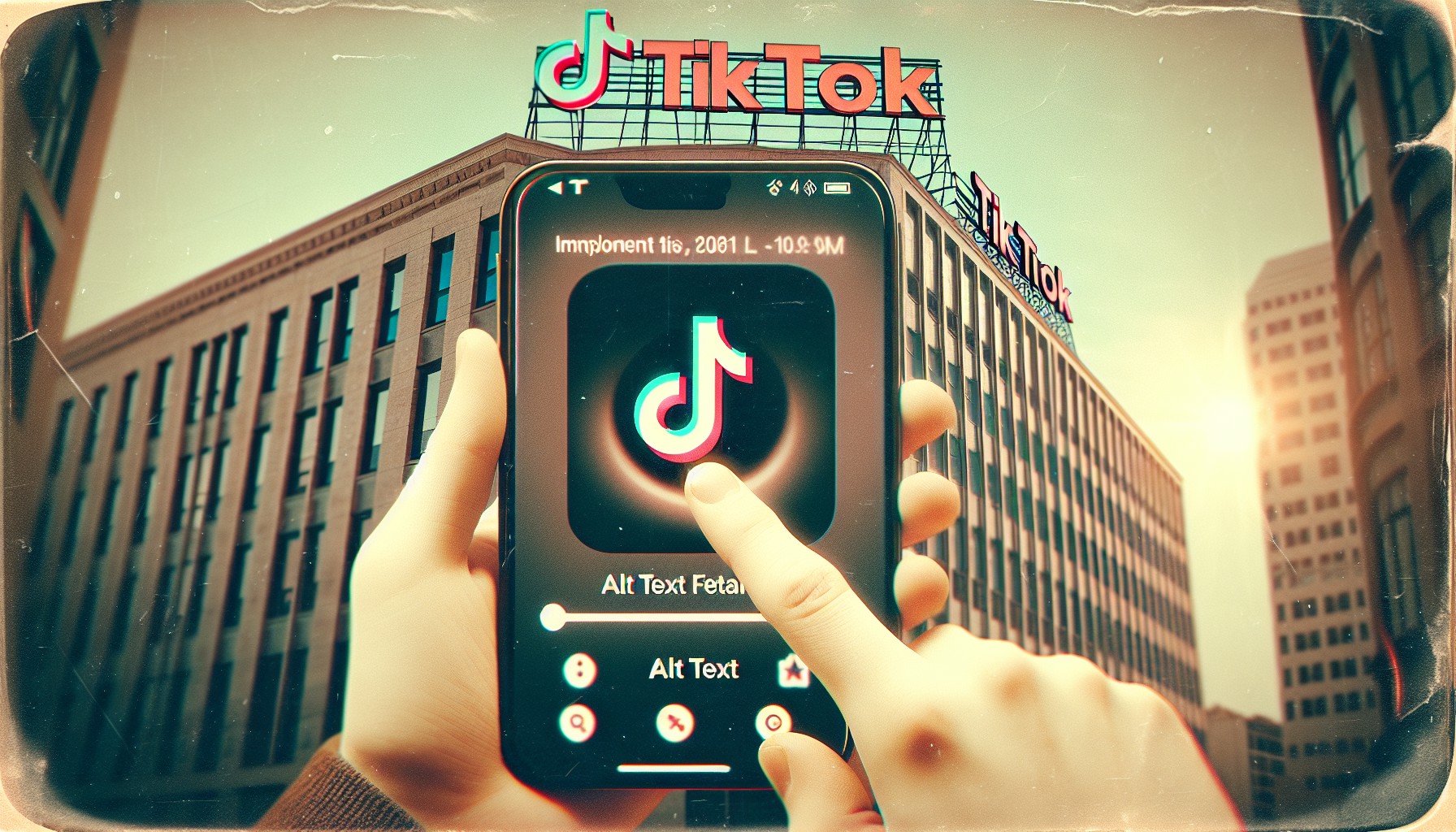In the ever-evolving landscape of social media, accessibility has become a focal point for many platforms aiming to create a more inclusive user experience. TikTok, a leading platform known for its short-form video content, is taking significant strides in this area by rolling out support for ALT text for photo posts. This new feature aims to enhance accessibility for users with visual and cognitive impairments by allowing creators to provide descriptive text for their photos, a move that could be seen as a testament to the growing intersection between social media and artificial intelligence.
The integration of ALT text into TikTok’s platform is a forward-thinking step that aligns with the broader trend of utilizing artificial intelligence to improve accessibility. Screen readers, powered by AI, have become instrumental in reading ALT text aloud, thereby transforming visual content into spoken word. This allows users with visual impairments to engage with content that would otherwise be inaccessible. With TikTok’s vast and diverse user base, this feature not only democratizes access to content but also promotes an inclusive digital environment.
Artificial intelligence plays a crucial role in this by providing the necessary tools to interpret and vocalize ALT text effectively. Advanced AI algorithms can analyze the context of the photo and ensure that the descriptions are delivered accurately and coherently. This technology is not only beneficial for users with disabilities but also enhances user engagement by providing richer content experiences for everyone. By leveraging AI, TikTok ensures that the ALT text feature is not just a checkbox for accessibility compliance, but a meaningful enhancement to how users interact with the platform.
Moreover, the introduction of ALT text on TikTok is a reflection of the growing trend towards personalized content experiences powered by AI. As AI continues to evolve, its ability to understand and describe complex visual content becomes more sophisticated. This development opens up new possibilities for content creators who can use AI to generate more descriptive and engaging ALT text. In the future, AI could potentially assist in automating the generation of these descriptions, making it easier for creators to reach a wider audience without sacrificing quality or accuracy.
The implications of this feature extend beyond individual accessibility. For brands and marketers, ALT text offers a new dimension of storytelling. By crafting compelling and descriptive text for their visual content, they can engage with audiences in a more meaningful way. This is particularly important in the digital age where attention spans are short, and the competition for user engagement is fierce. AI-driven insights can help brands tailor their ALT text to resonate with different demographic segments, thus optimizing their reach and impact on the platform.
TikTok’s initiative also highlights the importance of collaboration between technology companies and advocacy groups for the disabled. By working together, they can ensure that the tools and features being developed are truly beneficial and effective for those who need them most. Artificial intelligence serves as a bridge in this collaboration, offering solutions that are both innovative and practical. As AI continues to advance, it holds the promise of further reducing barriers and creating a more inclusive digital world.
This move by TikTok may also inspire other social media platforms to follow suit, integrating similar AI-powered accessibility features. As the digital landscape becomes increasingly competitive, inclusivity could become a key differentiator. Social platforms that prioritize accessibility not only enhance their brand reputation but also tap into a broader, more diverse audience base. This strategy aligns with the global push towards digital inclusivity, ensuring that all users, regardless of ability, can participate in the online community.
As we look to the future, the role of artificial intelligence in accessibility will likely continue to expand. Innovative solutions like TikTok’s ALT text feature are just the beginning. With AI’s ability to learn and adapt, the potential for creating a universally accessible internet is within reach. By embracing these technologies, platforms can pave the way for a more inclusive and equitable digital experience for all users.
